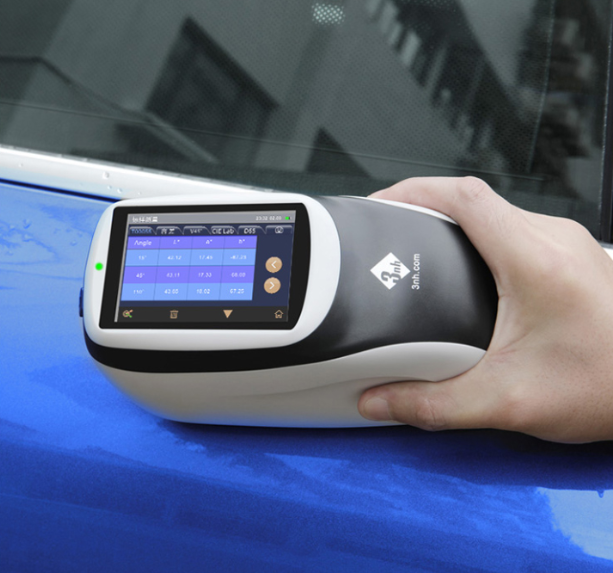When it comes to achieving perfect vision, understanding contact lens specifications is essential. Contact lenses are not just about comfort—they’re a blend of science, precision, and personal customization. Whether you’re a beginner or a professional in eye care, having the right lens specs ensures accuracy, comfort, and eye health.
The world of contact lenses is filled with terms like base curve, diameter, Dk, power, and material type. Learning how these parameters interact helps users make smarter decisions and helps practitioners recommend lenses that enhance visual clarity and eye safety.
What Are Contact Lens Specifications?
Contact lens specifications define how a lens fits your eye and how well it corrects vision. These details are unique for every user, depending on eye shape, prescription, and lifestyle.
The key parameters include:
- Base Curve (BC): Determines how the lens curves to match your cornea. A wrong curve can cause discomfort or blur.
- Diameter (DIA): The overall width of the lens, influencing coverage and stability.
- Power (PWR): Also known as the sphere, this corrects nearsightedness (-) or farsightedness (+).
- Cylinder and Axis (for Toric lenses): Correct astigmatism by adjusting irregular corneal shapes.
- Dk/t Value: Indicates oxygen permeability—vital for corneal health and long-term comfort.
- Material Type: Soft, silicone hydrogel, or rigid gas permeable (RGP) lenses each offer distinct benefits.
Understanding these factors ensures proper fitting and optimal performance.
The Evolution of Modern Contact Lenses
The earliest contact lenses were made of glass in the late 1800s, uncomfortable and unsafe for long wear. Over time, innovations introduced plastic, then soft hydrogel materials in the 1970s, allowing better oxygen flow.
Today, silicone hydrogel lenses dominate due to their combination of softness, oxygen permeability, and durability. Modern lenses now include smart coatings that resist protein buildup, UV protection, and moisture-locking technology—making them more comfortable than ever.
Types of Contact Lenses Based on Usage
Every user’s lifestyle differs, so choosing the right type of lens is crucial. Here are the most common categories:
Daily Disposable Lenses
Perfect for convenience. You wear them once and throw them away—ideal for busy routines and reducing infection risks.
Biweekly or Monthly Lenses
Reusable lenses that require cleaning and storage. They’re cost-effective but demand consistent hygiene.
Extended-Wear Lenses
It can be worn overnight for several days, thanks to its high oxygen permeability. However, they need professional supervision to avoid dryness.
Toric Lenses
Specially made for astigmatism. They balance vision by aligning with specific corneal curves using unique axis parameters.
Multifocal and Bifocal Lenses
Designed for people with presbyopia (age-related focus loss). They allow clear vision for near and far distances without switching glasses.
Understanding the Power Behind Lenses
The power or prescription strength of a lens determines how light is refracted to the retina. Each eye might require a different power level.
- Negative (-) powers correct myopia (nearsightedness).
- Positive (+) powers correct hyperopia (farsightedness).
Your optometrist calculates these values after a comprehensive eye exam. It’s crucial never to use someone else’s prescription since even a small mismatch can lead to eye strain or blurred vision.
The Role of Oxygen Permeability (Dk/t)
One of the most important parameters in lens performance is Dk/t, which measures how much oxygen passes through the lens material. The cornea needs oxygen to stay clear and healthy. Low oxygen lenses may cause dryness, redness, or long-term corneal swelling.
High Dk/t lenses, like silicone hydrogel types, are best for people who wear contacts for long hours.
Toric Lenses: Precision for Astigmatism
Astigmatism occurs when your cornea is not perfectly round. Toric lenses are uniquely shaped to correct this irregularity. They have two powers: one for near or far vision, and one for astigmatism correction (cylinder).
The axis value ensures the lens aligns correctly on your eye. When fitted accurately, toric lenses provide sharp, stable vision—even for complex prescriptions.
Multifocal Lenses: Clear Vision at Every Distance
For those over 40, presbyopia makes focusing on near objects harder. Multifocal lenses combine different optical zones for near, intermediate, and distant vision.
Unlike bifocals, which have two distinct vision zones, multifocals provide a seamless transition, allowing natural focus shifts throughout the day. They’re perfect for professionals who work on screens or read often.
Fitting Contact Lenses the Right Way
A proper lens fitting session ensures your lenses fit comfortably and don’t harm your eyes. The fitting includes:
- Measuring corneal curvature with a keratometer
- Checking tear film quality
- Testing lens comfort and movement
- Evaluating visual clarity after application
Even if your lens specs look perfect on paper, real-world fitting helps fine-tune comfort and stability.
Common Lens Fitting Issues and Fixes
| Problem | Cause | Solution |
| Blurry Vision | Incorrect power or misaligned toric lens | Refit or recheck prescription |
| Dryness | Low Dk/t or poor tear quality | Switch to silicone hydrogel or use rewetting drops |
| Redness | Overwear or infection | Remove lenses, clean properly, rest eyes |
| Discomfort | Wrong base curve or material | Try an alternate fit or a softer material |
A small adjustment can make a big difference in comfort and visual sharpness.
Cleaning and Maintenance of Lenses
Proper hygiene is non-negotiable for contact lens safety. Always:
- Wash and dry your hands before handling lenses.
- Use recommended solutions—never tap water.
- Replace storage cases every three months.
- Follow the replacement schedule strictly.
Skipping these steps can lead to eye infections or corneal damage.
The Importance of Professional Eye Exams
Even if your vision feels fine, regular eye exams are essential. They help detect early signs of dryness, allergies, or corneal changes that affect how lenses fit.
Eye care professionals also update your prescription to match your changing vision needs. Over time, natural eye shape shifts can make old specs inaccurate.
Digital Eye Strain and Lens Comfort
With long screen exposure, many contact lens users suffer from digital eye strain—characterized by dryness, burning, or blurred vision.
Modern lenses come with moisture-lock technology and blue light filtering features, reducing fatigue during computer or smartphone use. Regular blinking and hydration also help maintain comfort throughout the day.
Future Innovations in Contact Lens Technology
The contact lens industry is evolving rapidly. Upcoming technologies include:
- Smart Lenses: Built-in sensors to monitor glucose levels or eye pressure.
- Self-Moisturizing Lenses: Using micro-channels that release hydration during wear.
- Eco-Friendly Materials: Biodegradable lenses that reduce environmental waste.
- Augmented Vision Lenses: Potentially offering heads-up displays for navigation or health data.
The future of vision care is blending medical science with digital intelligence.
How to Choose the Right Lens for You
When selecting contact lenses, consider:
- Your eye condition (myopia, hyperopia, astigmatism, presbyopia)
- Lifestyle (daily wear, sports, travel)
- Sensitivity to materials or preservatives
- Budget and replacement frequency
Always consult your optometrist before switching brands or materials, as individual comfort varies.
Why Understanding Lens Specs Matters
Knowing your contact lens specs empowers you to take control of your eye health. It ensures that when you order lenses, you get exactly what fits your eyes—not just what’s convenient.
It also helps in identifying compatible alternatives, comparing performance features, and troubleshooting comfort issues without guesswork.
Conclusion
Contact lenses are more than corrective tools—they’re precision-designed optical devices tailored to your unique eyes. By understanding parameters like base curve, diameter, power, and Dk/t, you ensure both clarity and comfort.
Whether you’re a professional optometrist or a daily lens user, knowledge of lens specs helps you make smarter, safer, and more confident decisions. The right understanding today leads to a healthier vision tomorrow.
FAQs
What is the ideal oxygen permeability for daily lenses?
Silicone hydrogel lenses with a Dk/t value above 100 are excellent for long-term comfort and healthy eyes.
Can I use the same specs for different lens brands?
Not always. Even with the same power, brands vary in base curve and material, affecting fit and comfort.
How often should I replace my contact lenses?
Follow your lens type—daily, biweekly, or monthly. Overusing lenses can lead to dryness and infections.
Are multifocal lenses good for computer work?
Yes, they allow smooth transitions between near and far focus, making them ideal for digital work.
What’s the best lens for sensitive eyes?
Hypoallergenic silicone hydrogel lenses with high moisture retention are the best for sensitive or dry eyes.
Read More: What Are the Best Kansas Mental Health Medicine Options?




